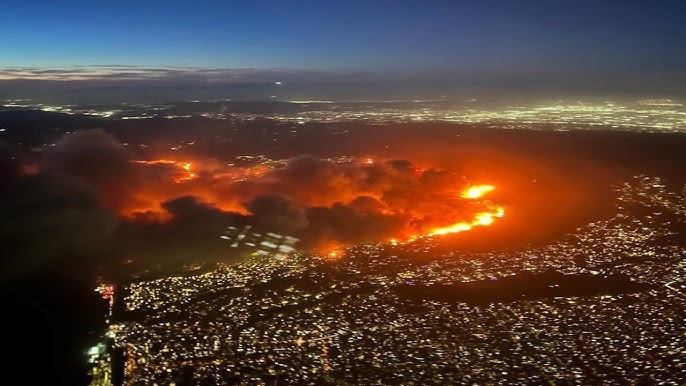
The Hollywood Hills fire has become one of the most notable and devastating wildfires to affect Los Angeles, California, and its surrounding areas. With its proximity to iconic landmarks, the hills have become a focal point for media coverage.
This article dives into the details of the Hollywood Hills fire, exploring its causes, the response from emergency services, the impact on the community, and ways to protect the area from future fires.
What Is the Hollywood Hills Fire?
The Hollywood Hills fire refers to a series of wildfires that have impacted the Hollywood Hills neighborhood and nearby areas. Located within the larger region of the Santa Monica Mountains, these hills are home to some of the most famous landmarks in Los Angeles, including the Hollywood Sign and Griffith Park. The fire is often associated with the dangers of urban wildland interface zones where wildfires are increasingly frequent due to climate change, dry conditions, and human activity.
Wildfires in the Hollywood Hills are not a new phenomenon. In recent years, the combination of extreme heat, prolonged droughts, and human negligence has made these areas more susceptible to fire outbreaks. The landscape, consisting of dry grasslands and brush, creates the perfect conditions for fires to spread quickly.
The Causes of the Hollywood Hills Fire
Several factors contribute to the frequent outbreaks of wildfires in the Hollywood Hills. The region’s geography and climate are significant contributors, but human activities also play a role.
- Climate Change and Droughts: California, including Los Angeles, has experienced increasing temperatures over the years. Prolonged droughts dry out the vegetation in the Hollywood Hills, making it more susceptible to ignition. Once a fire starts, it can spread rapidly, fueled by the dry vegetation and strong winds.
- Human Activity: Often, wildfires are started by human negligence or deliberate acts. Unattended campfires, discarded cigarette butts, faulty electrical lines, and arson are common causes of fires in these regions. In some cases, fireworks or outdoor burning may ignite a blaze.
- Santa Ana Winds: The dry, hot winds that blow from the east, known as Santa Ana winds, contribute to the rapid spread of fires. These winds can gust at speeds of over 50 miles per hour, propelling the flames and making firefighting efforts more difficult.
- Wildland Urban Interface: The Hollywood Hills is a prime example of the wildland-urban interface, where urban development meets natural vegetation. The densely populated areas near the hills are often at risk due to the close proximity of flammable vegetation.
The Impact of the Hollywood Hills Fire

When the Hollywood Hills fire breaks out, it affects more than just the surrounding vegetation. The consequences can be severe, touching the lives of residents, businesses, and iconic landmarks.
1. Property Damage
As the fire spreads, homes and properties situated in the hills are at great risk. Celebrities and high-profile individuals often own homes in this area, leading to media attention whenever a fire threatens these properties. In past fires, several homes in the Hollywood Hills have been destroyed or damaged, leading to millions of dollars in losses.
2. Air Quality and Health Hazards
The smoke produced by wildfires can travel for miles, affecting air quality in surrounding neighborhoods, including those in central Los Angeles. People with respiratory conditions like asthma may experience exacerbated symptoms, while others may face temporary health issues due to exposure to smoke and particulate matter.
3. Tourism and Landmarks
The Hollywood Sign, one of the most recognizable symbols of Los Angeles, is located in the heart of the Hollywood Hills. When a fire threatens this area, the sign becomes a high-priority point of concern. Although the sign itself has never been destroyed by fire, previous fires have come dangerously close to damaging this historical landmark.
4. Wildlife and Ecosystem Damage
The ecosystem in the Hollywood Hills is home to various wildlife, including deer, coyotes, foxes, and birds. When a fire sweeps through, it can decimate local habitats, forcing animals to flee and possibly die. The long-term impact on wildlife populations can be severe, especially in cases of repeated fires.
5. Displacement of Residents
Fires in the Hollywood Hills often lead to the evacuation of hundreds of residents. Evacuation orders disrupt lives, as families and individuals are forced to leave their homes and seek shelter elsewhere. Although many residents may return once the fire is under control, the emotional toll and uncertainty can last much longer.
The Response to the Hollywood Hills Fire

The response to fires in the Hollywood Hills is typically swift, with local fire departments and emergency services working together to control and suppress the blaze. The Los Angeles Fire Department (LAFD) plays a critical role in responding to these emergencies, often working in conjunction with other agencies like the California Department of Forestry and Fire Protection (CAL FIRE).
Firefighting Efforts
Wildfires in hilly and rugged terrain pose unique challenges for firefighters. The steep slopes, combined with high winds, can make it difficult to control the fire and prevent it from spreading further. Helicopters and water-dropping planes are frequently used to slow the fire’s advance, while ground crews work tirelessly to contain the blaze.
Evacuations and Shelters
When the fire reaches a critical level, authorities issue mandatory evacuation orders for areas deemed to be at risk. Shelters are set up across the city to provide temporary housing for displaced residents. Additionally, social media and emergency alerts are used to keep the public informed.
Long-term Recovery
Once the fire is under control, recovery efforts begin. These efforts include restoring power, cleaning up debris, and providing aid to those who have lost their homes. The government also initiates programs to support the rebuilding of destroyed properties and the rehabilitation of affected areas.
Prevention and Mitigation Measures
Given the frequency of wildfires in the Hollywood Hills, it’s essential to implement measures to reduce the risk and impact of future fires. Some steps include:
- Fire-Resistant Landscaping: Homeowners in fire-prone areas are encouraged to create defensible spaces around their properties by removing dry brush, using fire-resistant plants, and clearing away dead vegetation.
- Building Codes: New buildings in the Hollywood Hills are subject to stricter fire codes, ensuring that structures are better equipped to withstand fires. These may include using fire-resistant materials and installing firebreaks.
- Fire Education and Awareness: Community outreach programs aim to educate residents about fire safety, prevention, and evacuation procedures.
- Prescribed Burns: Controlled burns are sometimes used to remove excess vegetation that could fuel a wildfire. These burns are carefully planned and executed under the supervision of experts.
- Technology and Innovation: Advances in technology, such as fire detection systems, drones, and improved communication networks, are helping authorities respond more effectively to wildfires.
Frequently Asked Questions (FAQs)
1. How do wildfires start in the Hollywood Hills? Wildfires in the Hollywood Hills often start due to a combination of natural factors like dry vegetation and human activities such as discarded cigarette butts, faulty power lines, or even arson.
2. How do firefighters battle wildfires in the Hollywood Hills? Firefighters use a combination of techniques, including ground crews to create firebreaks, helicopters to drop water, and fire retardants to slow the blaze’s progress. The rugged terrain and high winds make it a challenging environment to fight fires.
3. Is the Hollywood Sign ever at risk from fires? Yes, the Hollywood Sign is often at risk during wildfires. While it has not been damaged by fires in the past, flames have come dangerously close to the iconic landmark in some instances.
4. Can homeowners prevent fires from reaching their homes? Yes, homeowners can create defensible space by removing dry brush, using fire-resistant plants, and ensuring that their property is free from debris. Following local fire safety guidelines is crucial in preventing damage.
5. How can I stay informed about a fire in my area? During a wildfire, local authorities issue evacuation orders and updates through emergency alerts, social media, and news channels. Residents should follow these updates closely and take action as instructed.
Conclusion
The Hollywood Hills fire highlights the increasing dangers of wildfires in urbanized areas. While the fires can cause significant destruction, the efforts of emergency services, residents, and the government work together to minimize their impact. As climate change continues to exacerbate the risks, it is crucial for communities in fire-prone areas to take preventive measures and remain prepared. With ongoing efforts to improve fire management, we hope to see fewer catastrophic fires in the future, preserving both the natural beauty and iconic landmarks of the Hollywood Hills.








